#computing fundamentally changes
Explore tagged Tumblr posts
Text
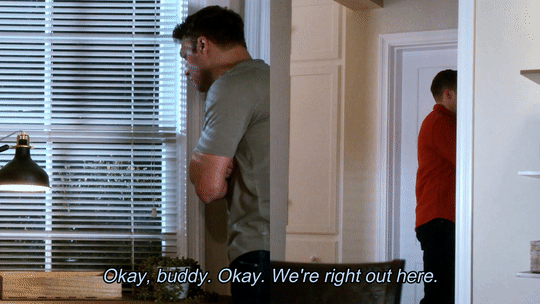
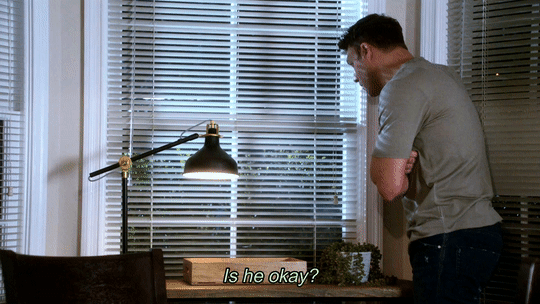
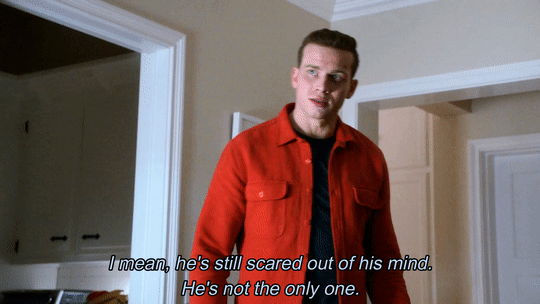
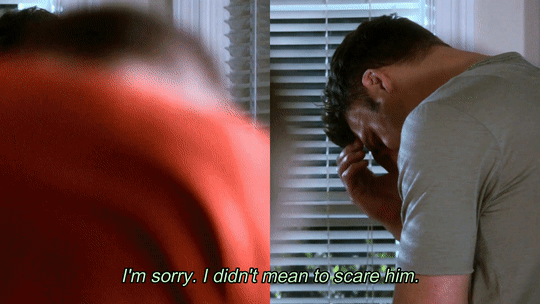
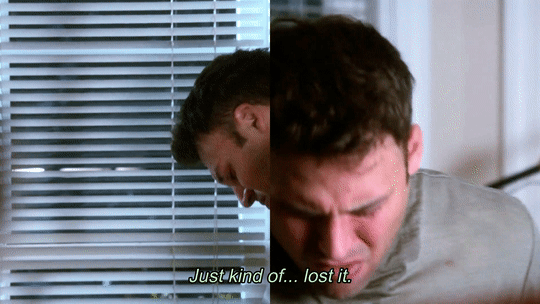
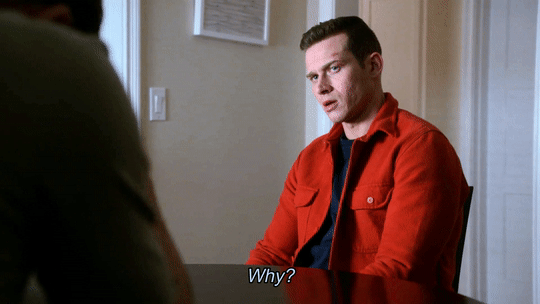
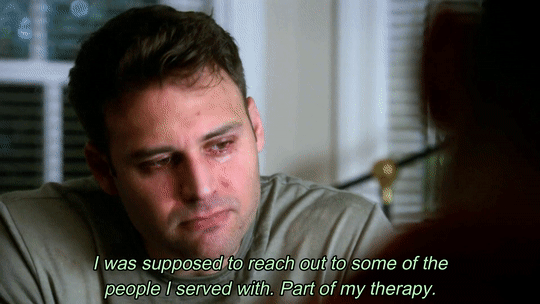
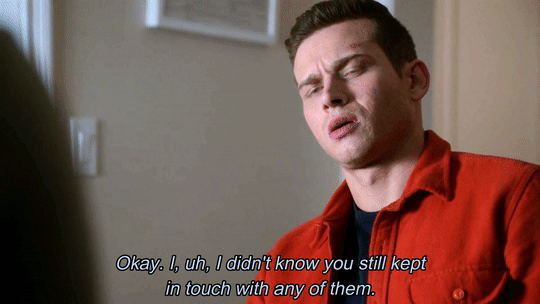
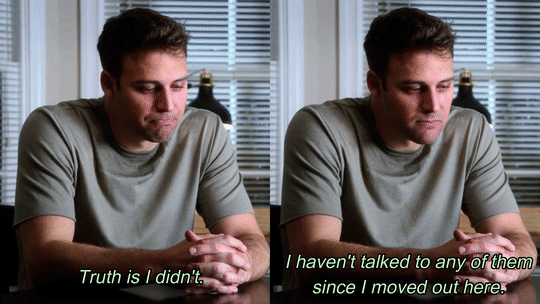
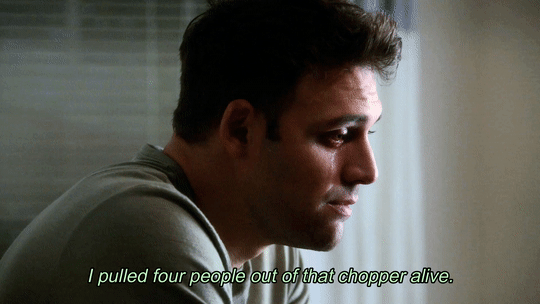

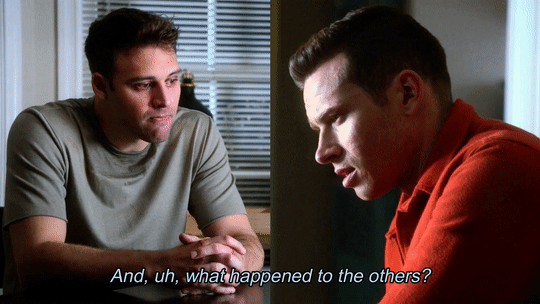
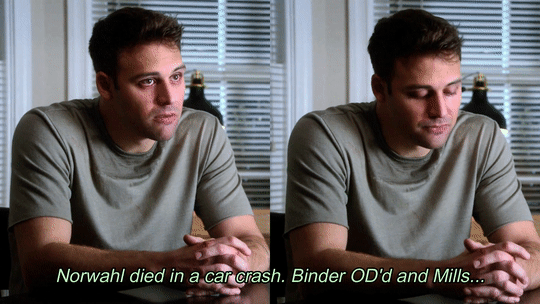
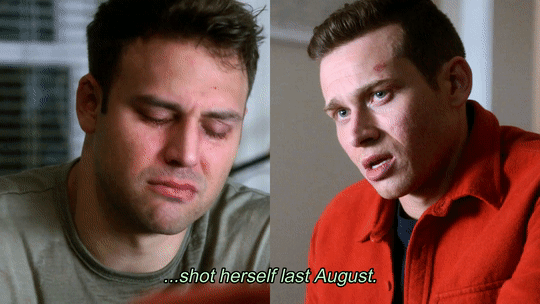
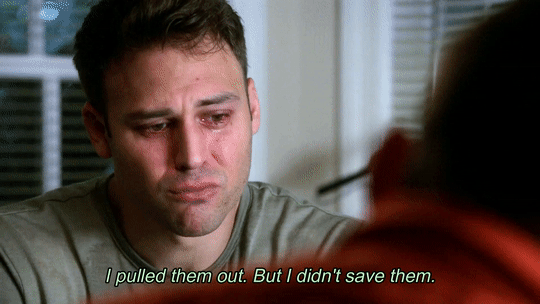
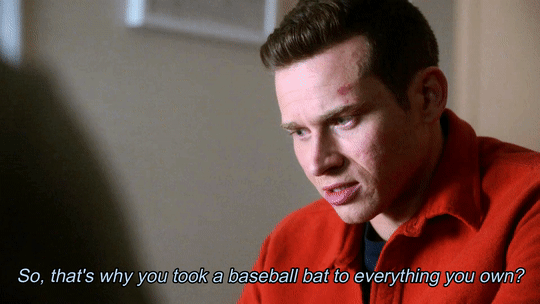
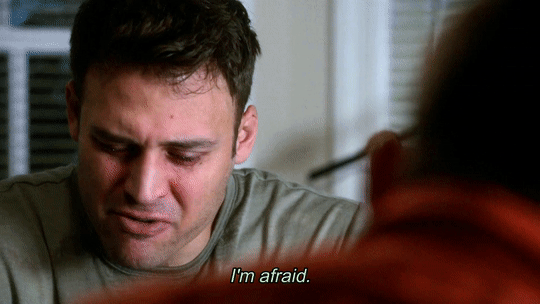
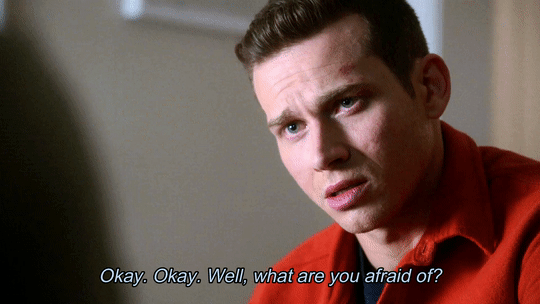
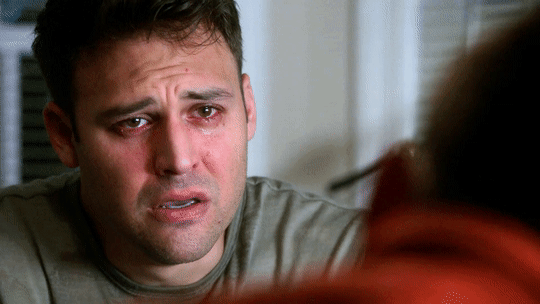
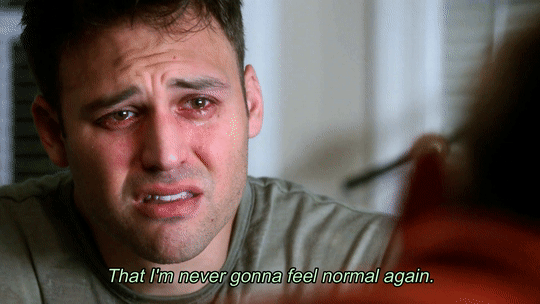
#911#911edit#911hiatus2023#911 abc#911 fox#my edit#buddie#buddieedit#911 on fox#eddiediazedit#evanbuckleyedit#otp: you don't need to pretend with me#usercam#i had to gif this#buddie scenes#because this was the moment i went crazy over this show#(i say as if i hadnt watched everything up to wrapped in red in like 6 days lol)#but like this fundamentally changed the way i looked at the show#now here i am oskaoskaoksaoksoaska#so#had to be here#long post#sorry#im done now#imma turn the computer off now#911verse#evan buckley#eddie diaz
609 notes
·
View notes
Text
DeepSeek’s Disruption: What It Means for the AI Industry and Its PR Challenges
New Post has been published on https://thedigitalinsider.com/deepseeks-disruption-what-it-means-for-the-ai-industry-and-its-pr-challenges/
DeepSeek’s Disruption: What It Means for the AI Industry and Its PR Challenges


DeepSeek‘s sudden rise has reshaped the AI field, where American tech giants like Nvidia, Google, and OpenAI once held clear dominance. Their success questions existing ideas about technological advancement, affects investor faith, and brings new considerations about AI’s direction. For both major corporations and smaller companies, this situation presents a chance to rethink their approach to market changes and public perception.
PR Challenges for US Tech Giants: Nvidia’s $600 Billion Signal
Nvidia‘s recent $600 billion market value drop shows just how much DeepSeek has influenced the industry. While Nvidia built its reputation on leading AI hardware development with advanced chips, DeepSeek demonstrated that significant advances can happen without massive computing resources. This achievement challenges the long-held belief that hardware superiority determines market success.
The financial decline goes beyond numbers – it marks a fundamental shift in how investors and the public view progress in AI. US companies that seemed to be dominating now appear open to competition from quick-moving rivals. For Nvidia and similar companies, rebuilding market confidence demands they re-prove that their premium chips are still relevant.
This situation impacts more than just Nvidia. Industry giants like Google and OpenAI, despite their vast computing resources, now face pressure to prove they can adapt. Their communications strategies must go beyond raw computing strength, effectively showcasing DeepSeek’s achievements while emphasizing the unique value of their approach – doing ��more with less.’ Given the nuanced and complex nature of deep tech, simplifying its value proposition requires both expertise and strategic storytelling. Companies that fail to evolve risk becoming obsolete in an increasingly dynamic field.
Shifting Narratives: Innovation Beyond Hardware
DeepSeek’s achievements have altered how the industry thinks about advancement in AI. For years, the field centered on increasing computing power, working under the assumption that more processors meant better results. DeepSeek proved that smart thinking and focused solutions can succeed without massive infrastructure investments.
This shift creates an opportunity for companies to change their message. With a great deal of fatigue in the media surrounding AI, the focus can no longer be just on technical capabilities. Instead, companies need to highlight real results and practical benefits that cut through the noise. US tech leaders must now strike a balance between technical excellence and clear communication that resonates with various audiences, from investors to everyday users, ensuring that AI is seen as a valuable, tangible asset rather than just another overhyped innovation.
Opportunities for Smaller Players
While large companies work to adjust their strategies, smaller AI firms can position themselves as capable competitors bringing fresh ideas to the table. DeepSeek showed that small teams with clear goals can compete successfully against industry giants, opening doors for others to follow.
For new companies, this means showing they don’t need massive resources to make meaningful contributions to AI development. Their message should focus on clever solutions and determined work, demonstrating how they’re carving out their own space in a field traditionally dominated by large corporations.
Small companies can set themselves apart by showing their ability to move quickly and solve problems creatively. Their size allows them to react faster to new trends and market needs while larger companies take time to adjust their direction. This speed and flexibility can become a significant advantage in today’s fast-moving tech sector.
Branding Challenges for US Firms
US companies like Nvidia, Google, and OpenAI must fundamentally change how they present themselves to the world. They can no longer take their position for granted and need to actively work to maintain their relevance in the changing AI and AI PR landscape.
These companies need to prioritize overarching communications strategies. As questions arise about their methods and effectiveness, they should be clear about their goals and approaches. Showing specific achievements and addressing concerns directly will help shape positive public opinion.
Finding the right tone in their messages presents another challenge. Being too confident could alienate audiences, while appearing uncertain might damage their standing in the industry. The sweet spot lies in projecting confidence while acknowledging and respecting competition.
Clear internal communication proves equally important. Everyone within these companies needs to share and understand the same vision. Mixed messages through public announcements, statements, or investor updates only create more doubt about their leadership abilities.
Communicating Across Markets
DeepSeek’s success highlights the need for messages that work across different cultures and regions. While US companies traditionally shaped tech discussions, DeepSeek proves that good ideas can come from anywhere in the world.
To stay competitive, US firms need to develop campaigns that connect with various audiences worldwide. They must realize that one message doesn’t work for everyone – companies must understand and address what matters in different regions. Being well-known isn’t enough anymore; companies must actively engage with markets on their terms.
DeepSeek gained international respect by focusing on results rather than location. US companies would benefit from following this example, making sure their message appeals to broad audiences across different cultures and markets.
The success of DeepSeek shows that AI development happens everywhere, not just in traditional tech hubs. US companies must show they value expertise and partnerships globally. Failing to recognize the importance of international collaboration could limit their reach and access to markets.
Adapting to a New Reality
DeepSeek’s emergence marks a turning point in AI development. US tech leaders must rethink their strategies and messages, while new companies can learn valuable lessons about challenging established practices and making their mark in the industry.
As the field continues to evolve, how companies communicate their story will become increasingly important. Success will come to those who can communicate effectively, stay adaptable, and build connections with people worldwide.
The future belongs to companies that can demonstrate real results and speak meaningfully to different audiences. DeepSeek proved that past rules don’t determine future success – creating new approaches does. Every company, regardless of size, must prove their worth at AI’s forefront through concrete actions rather than just words.
#5WPR#ai#AI development#AI industry#American#Announcements#approach#billion#Branding#challenge#change#chips#Collaboration#communication#communications#Companies#competition#computing#concrete#deal#deepseek#development#direction#disruption#fatigue#financial#focus#Fundamental#Future#Google
3 notes
·
View notes
Text
why the fuck is it that some people cant seem to acknowledge that people can just... be disabled. not through any fault of their own, not because something "happened" to them, just because, you know, sometimes people have disabilities. like, come on
#.pdf#rd#kd#just a warning these tags are long. like. really incredibly long. i had thoughts.#sorry for the vague ass post i'm just upset about some stupid shit my dad said yesterday.#namely: outright telling me that he doesn't believe i have non-24 (circadian rhythm disorder).#and that even if i do he doesn't believe it's possible for it to actually be a lifelong and disabling condition.#*also: this post isn't meant to imply that disabilities that did have some inciting incident are more accepted or anything.#it's just that i'm frustrated with the “you're disabled? why? what happened?” sentiment a lot of people seem to have.#nothing happened to cause my disability. i'm just like this. no i can't change it. what the fuck do you want me to tell you?#i'd guess it probably has to do with society's focus on work and productivity and career-mindedness above all else.#and when someone comes along that doesn't fit in with the way things are structured it just doesn't compute.#because the idea of people who can't dedicate their entire lives to working is so fundamentally contradictory to their view of... i don't-#-know. meaning in life? fulfillment? that they feel a need to reject the possibility altogether.#this is mainly when dealing with invisible disabilities from what i've seen. because i think there's a tendency to view visibly disabled-#-people as belonging to a different category altogether. which of course is its own issue but i'm not visibly disabled so i don't feel-#-like it's necessarily my place to speak on that.#anyway. i just want my struggles to be acknowledged as real. because they are. and i need people to understand that I Have A Disability.#albeit one many people don't even believe could be real because there's a sort of belief that circadian rhythms are purely a product of-#-external forces like sunlight so “you can't possibly have yours be different and have you tried just going outside more?” sigh.#sorry i also just remembered my dad telling me he doesn't believe i can have something so rare because the chances of having it are too low.#which is some ridiculous logic to me. rare doesn't mean it's impossible. some amount of people have to wind up with it regardless.#i just lucked out i guess.#n24 tag
10 notes
·
View notes
Text
i do love my family very dearly but the internalized ableism the men in here struggle with is. so much
#marzi speaks#it’s worse with my brother but he’s doing more to actively work on improving that#my dad however has very subtle internalized ableism that i don’t think he recognizes is there#which is. fun#like earlier. either last night or this morning i don’t remember#i was talking to him about how while ideologically i have nothing against accepting needing help and things like that#in practice it’s very challenging to adjust to being disabled even temporarily. and that if i do end up with a diagnosis that’s gonna be#a lot to handle. both mentally and just with the lifestyle changes i’ll have to make#and he makes a bit of a face and goes ‘i wouldn’t quite call you disabled. i’d just say ‘ill’’#and i just sort of look at him. and i blink. and i go ‘i am physically Un-Able to do things i am normally able to do’#‘i can’t walk long distances at all. i can’t sit in chairs for too long without causing pain’#‘i’ve spent the last 24 hours staring longingly at my computer because i want to draw but am currently Not Able To’#he didn’t argue with me but i can tell he was still unnerved by the idea of picturing his daughter as disabled#also like . illness and disability are not mutually exclusive? several disabilities are or involve chronic illness#i shouldn’t be surprised though. i mentioned considering starting lexapro#and he went on his ‘you’re an adult and it’s your choice in the end but i wouldn’t recommend it’ spiel#(he’s anti-psychiatry bc he doesn’t like the idea of breaking the brain down into smth so purely physical)#(and also doesn’t like the idea of someone being dependent on pills their whole life)#(which i’m giving him some slack on rn bc he is a just-got-clean recovering opoid addict. so)#(btw before any of you say SHIT abt my dad he took his pills legally prescribed for chronic pain and did not abuse them)#(and even if he DID that would give nobody a right to make a moral judgement on him. ok cool)#i then reminded him that my mom takes anti-anxiety meds and they really really helped her#and he just goes ‘true.’ and moves on#king u got some shit to unpack#it’s fine if u didn’t want to start antidepressants when it was recommended to you meds aren’t for everyone#but like come on now. u don’t gotta be so fundamentally against it when literally ur own wife who you adore takes psych meds#anywho my mom handled me making the disability comment much better. she was basically just like ‘ur fear is totally understandable’#‘u have a good support system we’ll help you through it’#which. thanks mom 👍 that was very kind of her to say
4 notes
·
View notes
Text
I remember when this was going around with people being like "it's ableist and pretentious to use restaurant slang that was ubiquitous 2 generations back (and is likely still used in some places)"
Instead of being like "oh dang look at these people trying to have solidarity and show they experienced similar things (even if they're wrong) with younger restaurant workers and unfortunately failing"
will never forget when i worked in a fast food joint. some customer wrote like “86 cherries” on their mobile order, as like a pretentious way of say no cherries, but the store was run by a bunch of high schoolers who are working their first job so they collectively went “why the fuck does this guy want 86 fucking cherries” and like piled them onto his milkshake
#like i get this caused confusion for OP#but computers have fundamentally changed the some of the ways restaurants operate and some people haven't realized that#wage depression has also meant that older restaurant workers just don't exist in places that have moved on to these systems#you tend to only find older workers in smaller diners in my experience#So the jargon's died completely
178K notes
·
View notes
Text
The most common mistake people make when thinking about prehistory and how to avoid it.
In "The Dawn of Everything, A New History for Humanity" David Graeber gives what I think might be the best piece of advice I've ever heard for understanding deep human history, and that is to get your mind out of the Garden of Eden.
People speculating about prehistory before modern archeology were quick to frame early humanity as existing in a "state of nature", either with pure innocent tribal communism, or being brutish barbarous cavemen, then something happened to bring us from the state of nature into "society". Did we make a Faustian bargain by domesticating plants and animals? Why is evidence of intergroup violence in prehistory so rare? How did we fall from the innocent state of nature? This, of course, smacks of the biblical creation story, so even if people don't believe it literally, they seem to have a hard time letting go of it spiritually even in a secular context.
This is pretty much nonsense, of course. Humans have existed for over 2 million years. Anatomically modern humans have existed for at least 300 thousand years. Behaviourally modern humans (with symbolism, art, long distance trade, political awareness) have existed for at least 50 thousand years, from our best evidence, but possibly a lot longer. The time between the Sumerians inventing writing and urban living 5,000 years ago and now is only a narrow slice of human history.
If we want to understand human history properly, we shouldn't understand people of the past as fundamentally different from us. They were intelligent, politically aware people doing their best in the world they found themselves in, just like we are today. We didn't fall from innocence with the development of behavioral modernity, religion, farming, war, money, capitalism, computers, or anything else. The world has changed a lot, but people have been experimenting with different ways to live for as long as there have been people, like this example I've posted before about disabled people's role in late pleistocene Eurasian society.
People have been the same as we are now for at least the last 50 thousand years. We have lived in countless different ways and will continue to experiment. There was no fall, and we don't live at the end of history.
8K notes
·
View notes
Note
What I don't get is that other your support of AI image generation, you're SO smart and well read and concerned with ethics. I genuinely looked up to you! So, what, ethics for everyone except for artists, or what? Is animation (my industry, so maybe I care more than the average person) too juvenile and simplistic a medium for you to care about its extinction at the hands of CEOs endorsing AI? This might sound juvenile too, but I'm kinda devastated, because I genuinely thought you were cool. You're either with artists or against us imho, on an issue as large as this, when already the layoffs in the industry are insurmountable for many, despite ongoing attempts to unionize. That user called someone a fascist for pointing this out, too. I guess both of you feel that way about those of us involved in class action lawsuits against AI image generation software.
i can't speak for anyone else or the things they've said or think of anyone. that said:
1. you should not look up to people on the computer. i'm just a girl running a silly little blog.
2. i am an artist across multiple mediums. the 'no true scotsman' bit where 'artists' are people who agree with you and you can discount anyone disagrees with you as 'not an artist' and therefore fundamentally unsympathetic to artists will make it very difficult to actually engage in substantive discussion.
3. i've stated my positions on this many times but i'll do it one more: i support unionization and industrial action. i support working class artists extracting safeguards from their employers against their immiseration by the introduction of AI technology into the work flow (i just made a post about this funnily enough). i think it is Bad for studio execs or publishers or whoever to replace artists with LLMs. However,
4. this is not a unique feature of AI or a unique evil built into the technology. this is just the nature of any technological advance under capitalism, that it will be used to increase productivity, which will push people out of work and use the increased competition for jobs to leverage that precarity into lower wages and worse conditions. the solution to this is not to oppose all advances in technology forever--the solution is to change the economic system under which technologies are leveraged for profit instead of general wellbeing.
5. this all said anyone involved in a class action lawsuit over AI is an enemy of art and everything i value in the world, because these lawsuits are all founded in ridiculous copyright claims that, if legitimated in court, would be cataclysmic for all transformative art--a victory for any of these spurious boondoggles would set a precedent that the bar for '''infringement''' is met by a process that is orders of magnitude less derivative than collage, sampling, found art, cut-ups, and even simple homage and reference. whatever windmills they think they are going to defeat, these people are crusading for the biggest expansion of copyright regime since mickey mouse and anyone who cares at all about art and creativity flourishing should hope they fail.
2K notes
·
View notes
Text
why are printers so hated? it's simple:
computers are good at computering. they are not good at the real world.
the biggest problems in computers, the ones that have had to change the most over the time they've existed, are the parts that deal with the real world. The keyboard, the mouse, the screen. every computer needs these, but they involve interacting with the real world. that's a problem. that's why they get replaced so much.
now, printers: printers have some of the most complex real-world interaction. they need to deposit ink on paper in 2 dimensions, and that results in at least three ways it can go on right from the start. (this is why 3D printers are just 2D printers that can go wrong in another whole dimension)
scanners fall into many of the same problems printers have, but fewer people have scanners, and they're not as cost-optimized. But they are nearly as annoying.
This is also why you can make a printer better by cutting down on the number of moving elements: laser printers are better than inkjets, because they only need to move in one dimension, and their ink is a powder, not a liquid. and the best-behaved printers of all are thermal printers: no ink and the head doesn't move. That's why every receipt printer is a thermal printer, because they need that shit to work all the time so they can sell shit. And thermal is the most reliable way to do that.
But yeah, cost-optimization is also a big part of why printers are such finicky unreliable bastards: you don't want to pay much for them. Who is excited for all the printing they're gonna be doing? basically nobody. But people get forced to have a printer because they gotta print something, for school or work or the government or whatever. So they want the cheapest thing that'll work. They're not shopping on features and functionality and design, they want something that costs barely anything, and can fucking PRINT. anything else is an optional bonus.
And here's the thing: there's a fundamental limit of how much you can optimize an inkjet printer, and we got near to it in like the late 90s. Every printer since then has just been a tad smaller, a tad faster, and added some gimmicks like printing from WIFI or bluetooth instead of needing to plug in a cable.
And that's the worst place to be in, for a computer component. The "I don't care how fancy it is, just give me one that works" zone. This is why you can buy a keyboard for 20$ and a mouse for 10$ and they both work plenty fine for 90% of users. They're objectively shit compared to the ones in the 60-150$ range, but do they work? yep. So that's what people get.
Printers fell into that zone long, long ago, when people stopped getting excited about "desktop publishing". So with printers shoved into the "make them as cheap as possible" zone, they have gotten exponentially shittier. Can you cut costs by 5$ a printer by making them jam more often? good. make them only last a couple years to save a buck or two per unit? absolutely. Can you make the printer cost 10$ less and make that back on the proprietary ink cartridges? oh, they've been doing that since Billy Clinton was in office.
It's the same place floppy disks were in in about 2000. CD-burners were not yet cheap enough, USB flash drives didn't exist yet (but were coming), modems weren't fast enough yet to copy stuff over the internet, superfloppies hadn't taken over like some hoped, and memory cards were too expensive and not everyone had a drive for them. So we still needed floppy disks, but at the same time this was a technology that hadn't changed in nearly 20 years. So people were tired of paying out the nose for them... the only solution? cut corners. I have floppy disks from 1984 that read perfectly, but a shrinkwrapped box of disks from 1999 will have over half the disks failed. They cut corners on the material quality, the QA process, the cleaning cloth inside the disk, everything they could. And the disks were shit as a result.
So, printers are in that particular note of the death-spiral where they've reached the point of "no one likes or cares about this technology, but it's still required so it's gone to shit". That's why they are so annoying, so unreliable, so fucking crap.
So, here's the good news:
You can still buy a better printer, and it will work far better. Laser printers still exist, and LED printers work the same way but even cheaper. They're still more expensive than inkjets (especially if you need color), but if you have to print stuff, they're a godsend. Way more reliable.
This is not a stable equilibrium. Printers cannot limp along in this terrible state forever. You know why I brought up floppy disk there? (besides the fact I'm a giant floppy disk nerd) because floppy disks GOT REPLACED. Have you used one this decade? CD-Rs and USB drives and internet sharing came along and ate the lunch of floppy disks, so much so that it's been over a decade since any more have been made. The same will happen to (inkjet) printers, eventually. This kind of clearly-broken situation cannot hold. It'll push people to go paperless, for companies to build cheaper alternatives to take over from the inkjets, or someone will come up with a new, more reliable printer based on some new technology that's now cheap enough to use in printers. Yeah, it sucks right now, but it can't last.
So, in conclusion: Printers suck, but this is both an innate problem caused by them having to deal with so much fucking Real World, and a local minimum of reliability that we're currently stuck in. Eventually we'll get out of this valley on the graph and printers will bother people a lot less.
Random fun facts about printing of the past and their local minimums:
in the hot metal type era, not only would the whole printing process expose you to lead, the most common method of printing text was the linotype, which could go wrong in a very fun way: if the next for a line wasn't properly justified (filling out the whole row), it could "squirt", and lead would escape through gaps in the type matrix. This would result in molten lead squirting out of the machine, possibly onto the operator. Anecdotally, linotype operators would sometimes recognize each other on the street because of the telltale spots on their forearms where they had white splotches where no hair grew, because they got bad lead burns. This type of printing remained in use until the 80s.
Another fun type of now-retired printers are drum printers, a type of line printer. These work something like a typewriter or dot-matrix printer, except the elements extend across the entire width of the paper. So instead of printing a character at time by smacking it into the paper, the whole line got smacked nearly at once. The problem is that if the paper jammed and the printer continued to try to print, that line of the paper would be repeatedly struck at high speed, creating a lot of heat. This worry created the now-infamous Linux error: "lp0 on fire". This was displayed when the error signals from a parallel printer didn't make sense... and it was a real worry. A high speed printer could definitely set the paper on fire, though this was rare.
So... one thing to be grateful about current shitty inkjet printers: they are very unlikely to burn anything, especially you.
(because before they could do that they'd have to work, at least a little, first, and that's very unlikely)
8K notes
·
View notes
Text
The annoying thing about all that seemingly bullshit hippie nature connection shit is that it's absolutely true
there is no fundamental difference between you, me, a random person in a random country across the world, the fly that just landed on your house, the grass growing down the street, the fish you ate for dinner, and the bird that's sitting on my computer
everything on this planet is connected and everything influences everything else and we are all inheritors of this spherical-ish rock's collective 4.6 billion years of history
we are all the same, fundamentally, just with a few changes here and there over the course of countless millennia, and we all rely on each other. eating is just the flow of nutrients and energy through the biosphere. everything dies because the planet changes and before we figured out how to modify our behavior during our lifetimes genetic mutation was the only way to adapt to that change. everything evolves. everything feels. everything yearns.
there is no "us verus them" for anything - not man versus nature, not man versus man, not man versus deity
its just Us. Us and Us. There are some of us who insist there's a "them", and that's a problem. But ultimately, they are still part of the "Us"
so it sucks, but the minute you start seeing literally anything as "the enemy" instead of "someone who has been horrifyingly mislead, because the vast majority of beings on this planet just want to do what they think is the right thing" you've already lost the plot
there is no enemy
there is no evil
we made up evil to try and make sense of actions we couldn't understand
there is only our planet, and everything on it, and we are all connected, and we all have to work together
I know that goes against your deep primate instincts, because you have to have a little selfishness to survive and that's where that lives, and sometimes that selfishness requires hurting others or protecting yourself from hurt
but the burden of being the first species (probably) aware of all this means we have to try to ignore that monkey inside of our chests and remember that there is no enemy. there is no them.
there is only us.
1K notes
·
View notes
Note
All these ADHD success stories have me in tears because that could have been me, and sometimes it was me, but I still couldn't make it. Three years of attempting the same two semesters, countless meetings with counselors and support services and professors, med dosage increases, mental breakdowns, love and support from a classmate who unofficially adopted me (who I haven't spoken to since I dropped out)... Nothing to show for it but burnout and trauma.
Can it ever get better from here? I feel hopeless.
I'm so sorry. I'm not sure people realise just how fractured your self-esteem becomes when you fail out of an academic course; it properly haunts you, and for a long time afterwards.
I failed my first degree thanks to my own undiagnosed ADHD. I have a very typical story among our people - female, high-achieving in high school, fell apart in university. It was my second year where everything suddenly went wrong. I did not turn in a single assignment on time. I physically, mechanically, could not get myself to write them until the night before the final two-weeks-late deadline, when I'd have to pull an all-nighter and hate life and myself and eventually hand it in in the morning and then sleep for the rest of the day. My attendance was utterly appalling, particularly for a 9am lecture; trying to get up at 8 was a task roughly equivalent to trying to walk on water. I had to resit the exams I'd failed every summer. A particular low point was missing an exam because I didn't realise I even had it; I'd attended so few lectures that I hadn't heard the lecturer say it existed. I remember lying in bed at night and crying, full on sobbing, because I knew something was wrong with me but I didn't know what had happened. I'd always been so good at this, always had such good grades; it was part of my identity, both for myself and how others saw me.
And like. What else can you blame that on? What other explanation is there, other than 'laziness'?
I did better in my third year; I was determined to attend, and get assignments done. I was better; though still a long way from perfect. But so much damage had been done by then. I had better marks, but there was one single module whose assignment I passed but whose exam I failed; I just needed to resit the exam.
And I simply couldn't bring myself to do it. There was too much shame, too much guilt. I honestly couldn't fathom what the point of even trying was. I was so burnt out and broken by then. And then I had to pick up the pieces afterwards and return to life, surrounded by friends who had made it, with nothing of my own to show.
It was a few years later that I decided to go back to uni and try again. By then, I was doing it for a different reason - I wanted to prove to myself and the world that I could do it, I think. I was a bit older and a bit wiser by then; enough that I chose to be very honest with myself at every step, and could start putting systems in place to succeed. This time, it was a small class, so the lecturers all knew me by name rather than letting me fade into the background; I studied part-time to avoid overwhelm; I altered my own deadlines to be a week early, and I forced myself to write to them.
I think a crucial part was also changing how I viewed the degree, and my attitude to higher ed. Before, I did uni because "That's what you do after school". I saw it as a bigger high school with different teachers, like I HAD to be there and was doing assignments and attending because I HAD to, not because I fundamentally wanted to do the course for its own sake. The second time, I did it properly - I wanted a degree. I wanted a degree in that specific topic. I wanted to improve academically. I read the feedback this time, and applied it to each following assignment.
And, I got into the habit of going into the university computer room every day for a few hours so I could work on my assignments. Other course mates started joining me; one in particular, Chris, who later also got diagnosed with ADHD. I now know we were body doubling, but at the time, we both just saw it as getting into a good habit and working on assignments in a nicer environment.
I finished that degree with a first. Since then, I did a PG Cert with Oxford University, and a post-grad PCET, both of which required the same study-based skillset. Oxford in particular was hard, because the nature of the course was a distance learning one, and that is Very Bad for my ADHD; my brain requires routine and structure and accountability to work. That one gave me mild burnout, actually. But, my point is this:
It absolutely can get better. What that looks like is going to be different for everyone, because you need to be very honest with yourself about what works for you and what doesn't, and then choose a course accordingly; there are also specific types of support that you may need, which may or may not be available.
But you really, really can do it if you can get the right set-up and accommodations.
However, I would be wrong not to add this:
We connect university with intelligence, culturally, and we shouldn't. University is about depth of learning on a particular subject, done within and according to a particular system. Intelligence helps, but other skills are also needed to be able to complete a university degree; and that's not for everyone. You could be more than intelligent enough for it, and it still may be the wrong fit for you. That doesn't mean you're stupid or broken or useless - it just means this isn't the system for you. And there's no shame whatsoever in that.
That may or may not be true of you! We don't know each other, you could be in either bracket. But either way: you are not stupid, or useless, or broken. The system is simply not set up for your personal brain chemistry, any more than a tree-climbing test is set up for a fish. Hopefully any of this ramble is helpful!
479 notes
·
View notes
Text
New transistor’s superlative properties could have broad electronics applications
New Post has been published on https://thedigitalinsider.com/new-transistors-superlative-properties-could-have-broad-electronics-applications/
New transistor’s superlative properties could have broad electronics applications


In 2021, a team led by MIT physicists reported creating a new ultrathin ferroelectric material, or one where positive and negative charges separate into different layers. At the time they noted the material’s potential for applications in computer memory and much more. Now the same core team and colleagues — including two from the lab next door — have built a transistor with that material and shown that its properties are so useful that it could change the world of electronics.
Although the team’s results are based on a single transistor in the lab, “in several aspects its properties already meet or exceed industry standards” for the ferroelectric transistors produced today, says Pablo Jarillo-Herrero, the Cecil and Ida Green Professor of Physics, who led the work with professor of physics Raymond Ashoori. Both are also affiliated with the Materials Research Laboratory.
“In my lab we primarily do fundamental physics. This is one of the first, and perhaps most dramatic, examples of how very basic science has led to something that could have a major impact on applications,” Jarillo-Herrero says.
Says Ashoori, “When I think of my whole career in physics, this is the work that I think 10 to 20 years from now could change the world.”
Among the new transistor’s superlative properties:
It can switch between positive and negative charges — essentially the ones and zeros of digital information — at very high speeds, on nanosecond time scales. (A nanosecond is a billionth of a second.)
It is extremely tough. After 100 billion switches it still worked with no signs of degradation.
The material behind the magic is only billionths of a meter thick, one of the thinnest of its kind in the world. That, in turn, could allow for much denser computer memory storage. It could also lead to much more energy-efficient transistors because the voltage required for switching scales with material thickness. (Ultrathin equals ultralow voltages.)
The work is reported in a recent issue of Science. The co-first authors of the paper are Kenji Yasuda, now an assistant professor at Cornell University, and Evan Zalys-Geller, now at Atom Computing. Additional authors are Xirui Wang, an MIT graduate student in physics; Daniel Bennett and Efthimios Kaxiras of Harvard University; Suraj S. Cheema, an assistant professor in MIT’s Department of Electrical Engineering and Computer Science and an affiliate of the Research Laboratory of Electronics; and Kenji Watanabe and Takashi Taniguchi of the National Institute for Materials Science in Japan.
What they did
In a ferroelectric material, positive and negative charges spontaneously head to different sides, or poles. Upon the application of an external electric field, those charges switch sides, reversing the polarization. Switching the polarization can be used to encode digital information, and that information will be nonvolatile, or stable over time. It won’t change unless an electric field is applied. For a ferroelectric to have broad application to electronics, all of this needs to happen at room temperature.
The new ferroelectric material reported in Science in 2021 is based on atomically thin sheets of boron nitride that are stacked parallel to each other, a configuration that doesn’t exist in nature. In bulk boron nitride, the individual layers of boron nitride are instead rotated by 180 degrees.
It turns out that when an electric field is applied to this parallel stacked configuration, one layer of the new boron nitride material slides over the other, slightly changing the positions of the boron and nitrogen atoms. For example, imagine that each of your hands is composed of only one layer of cells. The new phenomenon is akin to pressing your hands together then slightly shifting one above the other.
“So the miracle is that by sliding the two layers a few angstroms, you end up with radically different electronics,” says Ashoori. The diameter of an atom is about 1 angstrom.
Another miracle: “nothing wears out in the sliding,” Ashoori continues. That’s why the new transistor could be switched 100 billion times without degrading. Compare that to the memory in a flash drive made with conventional materials. “Each time you write and erase a flash memory, you get some degradation,” says Ashoori. “Over time, it wears out, which means that you have to use some very sophisticated methods for distributing where you’re reading and writing on the chip.” The new material could make those steps obsolete.
A collaborative effort
Yasuda, the co-first author of the current Science paper, applauds the collaborations involved in the work. Among them, “we [Jarillo-Herrero’s team] made the material and, together with Ray [Ashoori] and [co-first author] Evan [Zalys-Geller], we measured its characteristics in detail. That was very exciting.” Says Ashoori, “many of the techniques in my lab just naturally applied to work that was going on in the lab next door. It’s been a lot of fun.”
Ashoori notes that “there’s a lot of interesting physics behind this” that could be explored. For example, “if you think about the two layers sliding past each other, where does that sliding start?” In addition, says Yasuda, could the ferroelectricity be triggered with something other than electricity, like an optical pulse? And is there a fundamental limit to the amount of switches the material can make?
Challenges remain. For example, the current way of producing the new ferroelectrics is difficult and not conducive to mass manufacturing. “We made a single transistor as a demonstration. If people could grow these materials on the wafer scale, we could create many, many more,” says Yasuda. He notes that different groups are already working to that end.
Concludes Ashoori, “There are a few problems. But if you solve them, this material fits in so many ways into potential future electronics. It’s very exciting.”
This work was supported by the U.S. Army Research Office, the MIT/Microsystems Technology Laboratories Samsung Semiconductor Research Fund, the U.S. National Science Foundation, the Gordon and Betty Moore Foundation, the Ramon Areces Foundation, the Basic Energy Sciences program of the U.S. Department of Energy, the Japan Society for the Promotion of Science, and the Ministry of Education, Culture, Sports, Science and Technology (MEXT) of Japan.
#2-D#affiliate#applications#atom#atoms#author#billion#boron nitride#career#Cells#change#chip#collaborative#computer#computer memory#Computer Science#Computer science and technology#computing#education#electric field#Electrical Engineering&Computer Science (eecs)#electricity#Electronics#energy#engineering#flash#Foundation#Fundamental#Future#green
2 notes
·
View notes
Text
The premature unleashing of AI and large language models (LLMs) in particular onto the open Internet is already having dire consequences for what were, for years, considered stabilized, centralized (if flawed) systems, such as the search engine. AI, thanks to the scope of its spread, its rogue unreliability (it lies — often), the way it poisons search results, hijacks SEO, and is increasingly being used for disinformation and fraud, is reintroducing a fundamental and destabilizing distrust back into the Internet. Once more, I can no longer trust the results Google provides me. On a daily basis I have to ask myself increasingly familiar questions: Is this first result a legitimate news source? Is this image of a protest real? Is that picture of a Kandinsky painting really his or is an AI forgery of his work? Across the board, it’s becoming increasingly hard to tell. For me and countless others, what used to be rote Internet usage has now turned into a nightmarish amount of wasted time spent discerning what is and isn’t real. As far as I, the ordinary user, am concerned, AI is evolving not into a life-changing and labor-saving technology as was promised by its capitalist overlords, but rather into a form of malware that targets, whether unwittingly or not, critical Internet infrastructure.
1 October 2024
181 notes
·
View notes
Text
In the span of just weeks, the U.S. government has experienced what may be the most consequential security breach in its history—not through a sophisticated cyberattack or an act of foreign espionage, but through official orders by a billionaire with a poorly defined government role. And the implications for national security are profound.
First, it was reported that people associated with the newly created Department of Government Efficiency (DOGE) had accessed the U.S. Treasury computer system, giving them the ability to collect data on and potentially control the department’s roughly $5.45 trillion in annual federal payments.
Then, we learned that uncleared DOGE personnel had gained access to classified data from the U.S. Agency for International Development, possibly copying it onto their own systems. Next, the Office of Personnel Management—which holds detailed personal data on millions of federal employees, including those with security clearances—was compromised. After that, Medicaid and Medicare records were compromised.
Meanwhile, only partially redacted names of CIA employees were sent over an unclassified email account. DOGE personnel are also reported to be feeding Education Department data into artificial intelligence software, and they have also started working at the Department of Energy.
This story is moving very fast. On Feb. 8, a federal judge blocked the DOGE team from accessing the Treasury Department systems any further. But given that DOGE workers have already copied data and possibly installed and modified software, it’s unclear how this fixes anything.
In any case, breaches of other critical government systems are likely to follow unless federal employees stand firm on the protocols protecting national security.
The systems that DOGE is accessing are not esoteric pieces of our nation’s infrastructure—they are the sinews of government.
For example, the Treasury Department systems contain the technical blueprints for how the federal government moves money, while the Office of Personnel Management (OPM) network contains information on who and what organizations the government employs and contracts with.
What makes this situation unprecedented isn’t just the scope, but also the method of attack. Foreign adversaries typically spend years attempting to penetrate government systems such as these, using stealth to avoid being seen and carefully hiding any tells or tracks. The Chinese government’s 2015 breach of OPM was a significant U.S. security failure, and it illustrated how personnel data could be used to identify intelligence officers and compromise national security.
In this case, external operators with limited experience and minimal oversight are doing their work in plain sight and under massive public scrutiny: gaining the highest levels of administrative access and making changes to the United States’ most sensitive networks, potentially introducing new security vulnerabilities in the process.
But the most alarming aspect isn’t just the access being granted. It’s the systematic dismantling of security measures that would detect and prevent misuse—including standard incident response protocols, auditing, and change-tracking mechanisms—by removing the career officials in charge of those security measures and replacing them with inexperienced operators.
The Treasury’s computer systems have such an impact on national security that they were designed with the same principle that guides nuclear launch protocols: No single person should have unlimited power. Just as launching a nuclear missile requires two separate officers turning their keys simultaneously, making changes to critical financial systems traditionally requires multiple authorized personnel working in concert.
This approach, known as “separation of duties,” isn’t just bureaucratic red tape; it’s a fundamental security principle as old as banking itself. When your local bank processes a large transfer, it requires two different employees to verify the transaction. When a company issues a major financial report, separate teams must review and approve it. These aren’t just formalities—they’re essential safeguards against corruption and error.
These measures have been bypassed or ignored. It’s as if someone found a way to rob Fort Knox by simply declaring that the new official policy is to fire all the guards and allow unescorted visits to the vault.
The implications for national security are staggering. Sen. Ron Wyden said his office had learned that the attackers gained privileges that allow them to modify core programs in Treasury Department computers that verify federal payments, access encrypted keys that secure financial transactions, and alter audit logs that record system changes. Over at OPM, reports indicate that individuals associated with DOGE connected an unauthorized server into the network. They are also reportedly training AI software on all of this sensitive data.
This is much more critical than the initial unauthorized access. These new servers have unknown capabilities and configurations, and there’s no evidence that this new code has gone through any rigorous security testing protocols. The AIs being trained are certainly not secure enough for this kind of data. All are ideal targets for any adversary, foreign or domestic, also seeking access to federal data.
There’s a reason why every modification—hardware or software—to these systems goes through a complex planning process and includes sophisticated access-control mechanisms. The national security crisis is that these systems are now much more vulnerable to dangerous attacks at the same time that the legitimate system administrators trained to protect them have been locked out.
By modifying core systems, the attackers have not only compromised current operations, but have also left behind vulnerabilities that could be exploited in future attacks—giving adversaries such as Russia and China an unprecedented opportunity. These countries have long targeted these systems. And they don’t just want to gather intelligence—they also want to understand how to disrupt these systems in a crisis.
Now, the technical details of how these systems operate, their security protocols, and their vulnerabilities are now potentially exposed to unknown parties without any of the usual safeguards. Instead of having to breach heavily fortified digital walls, these parties can simply walk through doors that are being propped open—and then erase evidence of their actions.
The security implications span three critical areas.
First, system manipulation: External operators can now modify operations while also altering audit trails that would track their changes. Second, data exposure: Beyond accessing personal information and transaction records, these operators can copy entire system architectures and security configurations—in one case, the technical blueprint of the country’s federal payment infrastructure. Third, and most critically, is the issue of system control: These operators can alter core systems and authentication mechanisms while disabling the very tools designed to detect such changes. This is more than modifying operations; it is modifying the infrastructure that those operations use.
To address these vulnerabilities, three immediate steps are essential. First, unauthorized access must be revoked and proper authentication protocols restored. Next, comprehensive system monitoring and change management must be reinstated—which, given the difficulty of cleaning a compromised system, will likely require a complete system reset. Finally, thorough audits must be conducted of all system changes made during this period.
This is beyond politics—this is a matter of national security. Foreign national intelligence organizations will be quick to take advantage of both the chaos and the new insecurities to steal U.S. data and install backdoors to allow for future access.
Each day of continued unrestricted access makes the eventual recovery more difficult and increases the risk of irreversible damage to these critical systems. While the full impact may take time to assess, these steps represent the minimum necessary actions to begin restoring system integrity and security protocols.
Assuming that anyone in the government still cares.
184 notes
·
View notes
Text
Bachira and Isagi’s Relationship is Doomed (Theory):
With the NEL arc having ended, we’ve seen Isagi “sell his soul”. While to me, what this entails in full is still somewhat unclear, one thing is a abundantly apparent: Isagi is losing the sentimentality he once carried for fútbol. He states it himself- in order to survive as a “talented learner” in a world of geniuses with God-given talents, he needs to become a machine. To claw his way to the top, he can’t just ride along the high of his own abilities anymore. No matter how great he can become, there will always those who with random, natural gifts, like Noel and Loki. No matter how hard he fights, the randomness of fate, luck and genetics will override his efforts simply by existing. Now his only purpose is “absolute victory” at all costs, even if it means sacrificing the fundamentals of what being a egotistical striker once meant to him.


How does this relate to Bachira? To start, his and Isagi’s play styles have always been polar opposites. Isagi uses his analytical skills to make up for his lack of notable physicality, while Bachira relies on his dribbling and off-brand instincts, following the unique, sporadic ideas that spur from his monster. However, the two still inherently understand and complement each other from their shared passion. Despite taking the ruthless journey to become number one, they share a love for the game and each other. They want to see each other improve and feed off of each other’s egos. This is why Isagi fills (filled?…) the void of Bachira’s monster. Their greatest strengths are also their greatest weaknesses, too- Isagi feeling like a second fiddle sheep for his lack of physical gifts, and Bachira’s crazy visions never being understood, isolating him from others- they balance each other out that way.


However, the passion they both once shared has fundamentally changed. Isagi most likely will not view the way he can grow off Bachira’s development in the same light. He won’t view any other players’ talents being steppingstones for his own in the same manner, either. Now, he must take in everything around him like a computer, nothing has personal can be at stake for him anymore, and no relationships can serve him beyond what lies directly in front of him. The sentimentality he and Bachira once he does not serve his new nihilistic mindset. If all the hard work in the world can be outdone simply by lucky genetics, is it even worth it? To outdo fate itself and become the best striker in the world, he has to sacrifice the hope and passion he once shared with Bachira. To make nothing off-limits to win, nothing has to be off-limits to lose, except for total victory itself. Thus, he has to destroy all personal and emotional connections in the game, as they can inherently be a weakness to be exploited; that’s what he’ll be thinking, at least.
We can see this loss of enthusiasm shown in how he refers to himself in the first vs third person at the end of the U-20 vs Japan / NEL arcs respectively. Yoichi Isagi is no longer the scrappy underdog using only his mind to make it up the ranks, he is now the face of the multi-billion dollar soccer corporations, dominating everything that gets in his way. Even to himself, he is just a product, a variable that must be used in whatever way is most optimal to win (16 y/o btw). The bright enthusiasm and determination in his eyes have dulled, being replaced with a cold, distant stare. Instead of the hope he carries for Japan being represented by him in jersey, he is dressed up and is “presentable”, as the only thing on his mind is the business of total victory. The sins of his choices literally surround him, encasing him in darkness, in comparison to the enlightening hope he once carried.


This is not what he bonded over with Bachira. Bachira has assumedly remained true to himself during the NEL, honing in his skills, creativity and ego while still holding a deep love for the sport. We’ll see if this will be enough for him to make it further, as I think it’s unclear if Bachira falls into the category of either “talented learner” or “genius” that Isagi has roped all great players into. Thus, their conflicting ideologies will now inevitably clash, the calculating puppet master vs the free-spirited monster. Before, they were enthusiastic to grow off of each other and take down those who stood in their way, while paying respect to their enemies’ talents. But now, their relationship has no merit in that regards. It is unclear if Isagi will still be equal to Bachira’s monster- was he only able to before because of the untapped potential and passion he held? Will he still be able to predict Bachira’s heart of playfulness with his own cold, detached soul?
Whatever the answer may be, the two cannot maintain their healthy relationship as it once was. In fact, codependency, not just on others, but on one’s own sense of self, is a theme VERY persistent in Blue Lock. Most clearly, we see it in Reo and Nagi. While Reo still held onto his love for Nagi, he was able to flourish as his own player independently. However, Nagi was too afraid and too comfortable to explore his own self worth without Reo and inevitably failed because of that (to Bachira nonetheless, that feels intentional.) Meanwhile, Kaiser and Ness’ development is the opposite of that. Kaiser eventually leaves Ness’ lapdog clinginess for his own similar “absolute” desire for victory against mad geniuses. In his despair, the once subservient Ness makes a play that Kaiser couldn’t catch. The god, once high and mighty in Ness’ eyes, was outsmarted because of his lack of faith and creativity in his former servant. However, Ness still places trust in Kaiser afterwards, now (assumedly) on equal grounds with his former “master”. In the pits of despair, Ness’ once toxic codependency for Kaiser brought both of them to rock bottom, and in that pit, they found the strength to make each other equals.


Reo / Nagi are a pitfall of what Isagi / Bachira could’ve became, and Kaiser / Ness moved up from R/N and became what I/B once was (can you tell I’m getting tired of typing all their names over and over). Now, Isagi and Bachira’s relationship is becoming something different, something worse. Imagine a spectrum of codependency, if you will: Nagi/Reo fall on one side, where their relationship fails because one of them got too comfortable. Kaiser/Ness falls in the middle, because they’ve reached a level of mutual understanding and respect. Isagi/Bachira were once that, but now they’ve crossed over to the other end- their relationship will fail because the basis of what it once was has changed too much.

Where will this leave the two of them by the end? Truly, I don’t know, only time will tell. Something to consider, though, is Snuffy’s words to Barou. Mick Moon killed himself because he made futbol his everything, and had nothing to fall back on when he failed. After hitting rock bottom, Snuffy took the steps to work on his sense of self, which propelled him to his greatest heights, while still being able to be truly happy both in and outside of fútbol; Mick Moon couldn’t find the heart to do that, as he made soccer his entire reason for existing. Isagi is currently following in Mick’s footsteps more than anything. While he may not end up as dire as Mick, if he fails, what will he have? His relationship with Bachira will crumble the same way Snuffy and Mick’s did. If he continues down the path he is on right now, Isagi has two options- to become the next Mick Moon- distraught and agonized by the failure of his own ego- or to become the next Noel Noa- the greatest player alive who (assumedly) sacrificed his sense of personal happiness to become a goal scoring machine.
Extra Tidbit:
This is just my personal theory because he’s my favorite character, but I don’t think Bachira falls strictly into either category of learner or genius. He has the “God-given” gift, not of his dribbling, but of his innate sense of unique and creative plays. Only he and Isagi- for the time being- can understand them (geez audhd allegory much) and it is an edge other players don’t have. But at the same time, the isolation he experienced as a kid, and the fact that his monster often prohibits him from being able to play well with others are all a set back. Thus, he has to adapt and rework his sense of self constantly, compared to the geniuses whose talents give them an automatic edge (I’M LOOKING AT YOU, LOKI). In this way, he is also a talented learner. I’d say Nagi is a little similar to Bachi in this regards, as well. He does have natural talent, but got locked off bc he didn’t focus on honing them in for his own gain. The main obstacle to that was the fact that it’s hard for him to actually care in the first place, which would mean that’s the obstacle that could make him a learner, as well. However, his downfall could also be a commentary on taking your given gifts for granted, so I guess it could go either way. Regardless, I really do think there is substantial evidence to suggest that Bachira might be the exception to Isagi’s current idea of fútbol players. Hell, I might even go as far to say this proves there’s maybe a 10% chance Bachira actually might win and become Blue Lock’s best striker, but that’s just my biases talking. I hope anyone who’s read this far enjoyed this yap session <3

#guys i love bachisagi#they WILL have a happy yaoiful ending trust…#doomed yaoi#bachisagi#reonagi#kainess#blue lock#blue lock theory#blue lock analysis#blue lock angst#analysis#fan analysis#theory#fan theory#sports#fútbol#soccer#manga#anime#animanga#shipping#bachira meguru#isagi yoichi#micheal kaiser#alexis ness#nagi seishiro#reo mikage#marc snuffy#noel noa#barou shouei
96 notes
·
View notes
Text
Ideas for Age Dreamers!
This can be for anyone, but I specifically had age dreamers in mind when compiling the list. Enjoy!
Play computer or video games you enjoyed as a child. (I personally love playing the educational ones again just because they are so comforting and nosta
If you struggle to stay entertained with traditional play, then there are plenty of alternative ways to stay engaged with toys. I recommend photo shoots (you can even make DIY sets and props), making a short film with them, changing their clothes and hair styles, setting them up to display, or even just cuddling with them while doing another activity.
I will forever recommend Nesting
Read and/or write agere fics. Perfect for getting into the smol mood :)
And if you don’t want to write fan fiction, write your very own original short story. Bonus points if it’s targeted to the age you dream to!
Look through bins of old toys, photo albums, and other things that make you nostalgic
Mix medias in your art. Combine crayons, markers, pastels, paints, etc—you can use exclusively kids materials, or use a mix of more ‘adult’ mediums with them. I love doing this because it adds a layer of nostalgia to my traditional art and makes it more personal :)
Think of or make a list of your favorite childhood memories
Rewatch your favorite kid’s series. I find that ones about fundamental learning (such as colors, letters, the concept of friendship, etc) are particularly comforting
If possible for your situation, go shopping for baby or kids items and donate them to a charity. It’s very fulfilling and nostalgic, and you can also keep a few pieces of gear for yourself!
Carry a stuffed animal with you everywhere


#sfw agere#age regressor#sfw interaction only#age regression community#age regression caregiver#agere little#little space#sfw regression#agere blog#agere community#sfw age dreamer#age dreaming#Age dreamer#sfw agedre#sfw age regressor
182 notes
·
View notes
Note
How about words related to infinity? I am obsessed with the thought of it.
It really is such a fascinating concept, isn't it?
Infinity—the quality of being endless; extending indefinitely
Abiding - continuing for a long time; enduring
Abysmal - having immense or fathomless extension downward, backward, or inward
Aeonian - lasting for an immeasurably or indefinitely long period of time; aeonic
Bottomlessness - the quality of being boundless, unlimited
Boundlessness - having no boundaries; vast
Ceaseless - continuing without cease; constant
Deathlessness - quality of being immortal, imperishable
Endlessness - being or seeming to be without end
Eternity - the quality or state of being eternal (i.e., having infinite duration)
Everlasting - lasting or enduring through all time; eternal
Fathomlessness - incapability of being fathomed; immeasurable
Foreverness - eternity
Illimitability - incapable of being limited or bounded; measureless
Immeasurable - indefinitely extensive
Immenseness - the quality of transcending ordinary means of measurement
Immortality - the quality or state of being immortal; unending existence
Imperishable - enduring or occurring forever
Incalculable - not capable of being calculated
Incomputable - not computable; very great
Indefinite - having no exact limits
Indissoluble - incapable of being annulled, undone, or broken; permanent
Inestimable - incapable of being estimated or computed
Inexpungible - incapable of being obliterated
Infinitude - the quality or state of being infinite; infiniteness
Interminableness - having or seeming to have no end
Limitlessness - boundlessness
Perenniality - the quality of being persistent, enduring
Permanence - the quality or state of being permanent; durability
Permanency - something continuing or enduring without fundamental or marked change; stable
Perpetuity - the quality or state of being everlasting; continuing forever
Persistent - continuing without change in function or structure
Sempiternity - eternity
Stationary - unchanging in condition
Steadfast - not subject to change
Stubbornness - quality of being unreasonably or perversely unyielding; mulish
Timelessness - having no beginning or end; eternal
Undying - not dying; immortal, perpetual
Unfaltering - not wavering or weakening; firm, steadfast
Unvarying - not exhibiting change or variation; not varying
Vastitude - immensity, vastness
Hope this helps with your writing. Do tag me, or send me a link. I'd love to read your work!
More: Word Lists
#anonymous#writeblr#dark academia#spilled ink#word list#writing reference#langblr#words#linguistics#writers on tumblr#poets on tumblr#literature#poetry#writing prompt#writing inspo#writing ideas#writing inspiration#creative writing#light academia#lit#studyblr#writing resources
258 notes
·
View notes